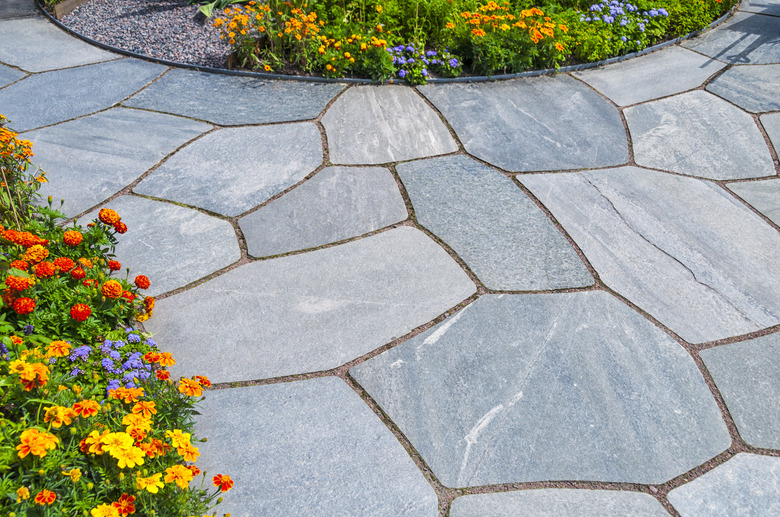How Deep Should You Dig When Installing Pavers?
We may receive a commission on purchases made from links.
Choosing the design, pattern, color, and material is the fun part of building a patio in your backyard. Now you're down to the important construction details, including the paver patio foundation. You need a sturdy base for your patio pavers to keep the patio stable and long-lasting. Knowing how deep to dig and what type of sand and gravel to use as the foundation is essential for building a beautiful and functional patio that lasts through all your backyard parties and family dinners outdoors.
Preparation for Your Pavers
Preparation for Your Pavers
The preparation of your subsoil and paver bed is very important to the project. The correct preparation and placement of subsoil and base materials ensure the strength of your patio. You'll want to begin by marking the area to be paved and placing wooden stakes around the area. Spray painting the area to be dug out is an easy way to see the boundaries for digging.
Before your dig, make sure your paver patio site has proper drainage and won't hold water once the pavers are set. You'll also need to determine the possible location of underground wires or plumbing to avoid hitting them as you dig. Once you know you're clear to dig, you can start removing the topsoil and subsoil.
How Deep to Dig
How Deep to Dig
For a typical patio using 3 to 3 1/2-inch thick pavers, dig about 9 inches deep to create a patio base with room for 5 inches of base material plus the pavers. You typically need 4 to 6 inches of the base gravel plus 1 or 2 inches of paver sand to create a sturdy foundation for your patio pavers.
Compact the soil and begin laying the gravel. Wetting the gravel lightly with water will help compact it as you put it into the site. Walking across the gravel will also help to compact it. Continue to add gravel in layers until you reach the desired depth.
Compacting the Material
Compacting the Material
You will need to put 1 to 2 inches of paver sand on top of your gravel to help compact it further and secure it to the soil. Fill in any low spots in your gravel with additional sand and repeat until your site is level, with a slight drop for drainage. Don't step on, compact, or wet the sand after you have finished "screeding"—the term used for compacting and leveling your soil. Your site is now prepared and ready for your pavers.
Planning for Edge Restraints
Planning for Edge Restraints
Another part of paver patio planning is deciding on the edge restraints. The edging material helps keep the pavers in place to keep them from shifting over time. You can purchase your restraints from most gardening centers. They're normally a black polymer or plastic.
Secure the restraints along the edge of your pavers and stake them about every 16 inches. Driving the spikes into your prepared base below your pavers at different angles will improve the holding power of the restraint to the earth. Having the proper depth for your base will hold your restraints and stakes securely against your pavers.
